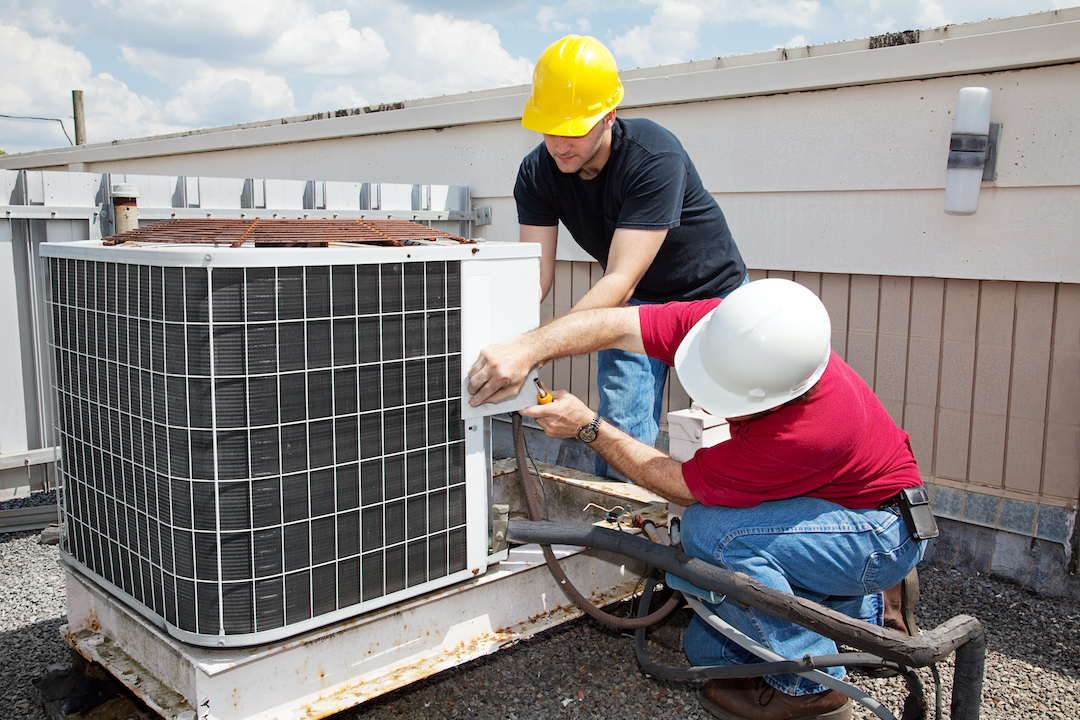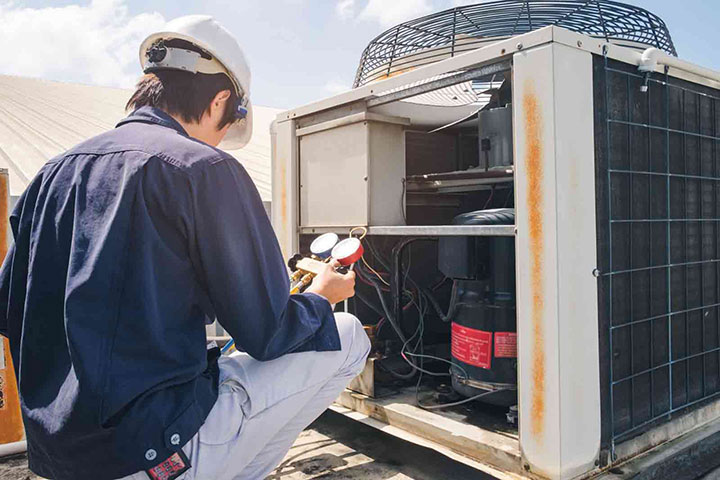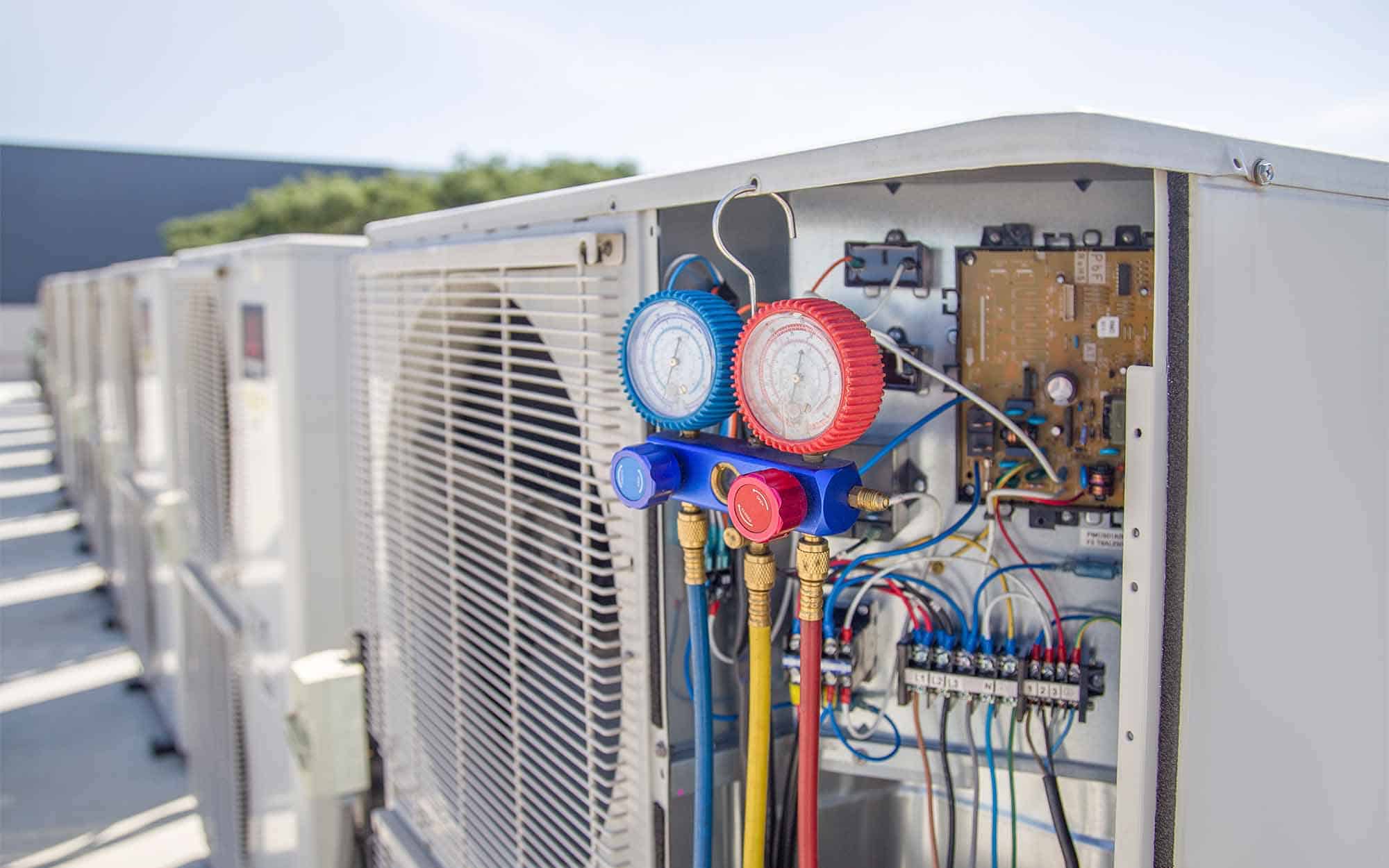10 Critical Things Before heat pump installation ooltewah tn
Wiki Article
How a Heat Pump and Heating System Job With Each Other to Optimize Your Home's Heating Effectiveness
Understanding exactly how a warmth pump and heater work together is vital for home owners seeking reliable home heating options. Each system has its staminas, offering a well balanced approach to home convenience. The warm pump excels in moderate temperatures, while the furnace supplies quick heat throughout severe cold. This synergy not just minimizes power expenses however additionally enhances the lifespan of both appliances. What elements influence this collaboration, and exactly how can homeowners optimize their advantages?Recognizing Heat Pumps: Just How They Work
Although lots of people might be unknown with their internal functions, warmth pumps play a vital function in modern heating systems. These gadgets run by moving heat from one location to an additional, utilizing the principles of thermodynamics. In chillier months, a heatpump extracts warm from the outside air, ground, or water, and transfers it indoors to heat the space. On the other hand, during warmer months, it can reverse the procedure, serving as an air conditioner by eliminating heat from inside to the outside.Heat pumps contain an evaporator, condenser, compressor, and growth valve. The refrigerant within the system takes in warm as it vaporizes at low temperatures and pressures. The compressor then boosts the pressure and temperature level of the cooling agent, permitting it to release warm as it condenses. This effective procedure can substantially lower power intake compared to conventional home heating techniques, making warmth pumps a lasting choice for climate control in homes.The Duty of Furnaces in Home Home Heating
Heating systems play a necessary role in home heating by supplying a dependable resource of heat throughout the colder months. They run by generating warm via combustion or electrical resistance, dispersing it throughout the home through ducts or radiant systems. The efficiency of a heater is often determined by its Yearly Fuel Utilization Effectiveness (AFUE) rating, which shows exactly how efficiently the system converts gas right into heat.Furnaces can utilize numerous energy sources, consisting of all-natural gas, oil, lp, or electrical power, permitting homeowners to pick one of the most appropriate choice for their requirements. Unlike heat pumps, which might battle in severe cold, heaters preserve regular efficiency, making certain that indoor temperatures stay comfy no matter exterior conditions. In addition, modern-day heaters frequently come outfitted with advanced technology, such as clever thermostats and variable-speed blowers, improving their efficiency and responsiveness. This versatility makes heating systems a vital part in all-encompassing home heating methods.
Benefits of Making Use Of Both Equipments With Each Other
Incorporating the staminas of both heating systems and heatpump can result in a much more reliable and reliable home heating option. Making use of both systems allows property owners to take advantage of the heatpump's energy effectiveness throughout milder temperature levels while depending on the heating system for more severe cold conditions. This dual approach can substantially lower power expenses, as heatpump take in much less electrical energy than traditional heating approaches when temperature levels are moderate.Additionally, using both systems with each other can enhance convenience levels in the home. Heatpump can give consistent, also heating, while heaters can promptly raise ambient temperatures when required. The combination of both systems can extend the lifespan of tools by reducing wear and tear on each system, as they share the workload. Ultimately, property owners can appreciate a well balanced, economical heating solution that readjusts perfectly to differing weather conditions, guaranteeing a cozy and welcoming home throughout the cold weather.Just How Heat Pumps and Furnaces Complement Each Other
When home owners incorporate heatpump and heaters, they produce a complementary heating unit that optimizes efficiency and convenience. Warm pumps operate by transferring warmth from the outside air or ground, making them very reliable in modest climates. They excel during milder temperatures, offering affordable heating. Conversely, heaters generate warm through combustion or electrical resistance, delivering strong, immediate warmth throughout extreme cold conditions.The combination of these two systems enables dynamic changes based on temperature level fluctuations. Throughout warmer months or milder wintertime days, the heatpump can take the lead, conserving power and minimizing costs. As temperatures decrease, the heater can effortlessly involve, making certain constant warmth throughout the home. This synergy not just optimizes energy use yet additionally enhances the lifespan of both systems, as each system runs within its optimal performance array. Together, they develop a balanced setting that adjusts to varying climate demands.
Enhancing Effectiveness: Tips for Homeowners
Home owners can boost their heating effectiveness via numerous sensible strategies. Establishing a routine maintenance timetable, integrating clever thermostat innovation, and implementing effective insulation and securing services are essential actions. These procedures not just boost convenience but likewise reduce energy prices.Normal Maintenance Schedule
To guarantee maximum heating effectiveness, developing a routine upkeep timetable is important for any kind of home. Home owners must prioritize regular evaluations of both warmth pumps and heating systems to identify peak performance. This consists of transforming air filters every one to 3 months, as clogged up filters can considerably lower effectiveness. Additionally, scheduling expert maintenance at the very least annually enables specialists to identify and address potential issues prior to they rise. Homeowners must additionally clean the warmth pump's outside device to stop debris buildup that can hinder air flow. By sticking to a regular upkeep timetable, homeowners not only boost their home heating systems' efficiency but additionally prolong their lifespan, leading to greater comfort and decreased energy costs throughout the colder months.Smart Thermostat Integration
Integrating a clever thermostat right into a home Go Here heating unit can considerably improve energy efficiency, specifically as it enables precise control over temperature setups. These gadgets can find out the home owner's timetable and preferences, automatically adjusting the temperature to enhance comfort while decreasing energy use. As an example, they can decrease home heating during times when the home is unoccupied, lowering unneeded intake. Many smart thermostats likewise provide real-time energy use data, allowing home owners to make educated decisions about their home heating habits. In addition, remote accessibility through mobile phone apps allows individuals to adjust settings from anywhere, ensuring the home is warm upon visit the site return. Overall, wise thermostat assimilation not just enhances convenience however significantly adds to energy savings and performance.
Insulation and Securing Solutions
Smart thermostats play an important duty in power efficiency, but their effectiveness can be greatly boosted by correct insulation and securing services. House owners should prioritize insulating floors, attic rooms, and walls to decrease warm loss. High-quality insulation materials, such as spray foam or fiberglass, can significantly boost thermal resistance. Furthermore, securing gaps around doors, air ducts, and home windows protects against cool air infiltration and warmth escape. Weatherstripping and caulking are effective approaches for resolving these leakages - heat pump replacement ooltewah tn. Normal assessments for air leakages, along with making use of blower door tests, can assist recognize issue areas. By purchasing insulation and securing, home owners can optimize the efficiency of their heating unit, inevitably bring about minimized energy intake and lower energy billsTypical Myths About Warm Pumps and Furnaces
What mistaken beliefs border warm pumps and heaters? Several individuals mistakenly think that heatpump are inadequate in cooler environments. In reality, modern-day warm pumps are developed to run successfully even in reduced temperatures, providing dependable heating throughout winter season. Another common misconception is that heating systems are constantly a lot more efficient than heatpump. This depends on the certain power sources and performance rankings of the devices in inquiry. Some might likewise assume that using both systems simultaneously is unneeded, but as a matter of fact, this combination can maximize heating performance, particularly throughout extreme weather. Furthermore, people often presume that warm pumps require continuous upkeep, when truthfully, they have comparable upkeep needs to standard furnace. By exposing these misconceptions, home owners can make more educated choices regarding their heating choices, inevitably resulting in enhanced convenience and power efficiency in their homes.Maintenance Considerations for Combined Solutions

Regularly Asked Concerns
Can Warm Pumps Work Properly in Incredibly Cold Climates?
Heatpump can struggle in incredibly chilly environments due to minimized performance and heat extraction restrictions. Improvements in modern technology have actually led to models developed for far better performance in such conditions, enhancing their practicality in severe atmospheres.
How Much Time Do Warm Pumps and Furnaces Commonly Last?
Warmth pumps typically last 15 to 20 years, while furnaces have a lifespan of 15 to 30 years. Normal upkeep can expand their long life, making certain reliable procedure and minimizing the requirement for premature replacements.
What Is the Average Expense of Setting Up Both Systems?
The typical cost of mounting both a warm pump and a furnace typically varies in between $5,000 to $10,000 - ductless mini splits. Factors affecting this cost include system dimension, installation intricacy, and regional labor pricesExist Tax Rewards for Making Use Of Energy-Efficient Heating Solutions?
Many house owners ask about tax obligation incentives for energy-efficient heating unit. Numerous federal and state programs commonly offer discounts or credit histories, urging the adoption of lasting innovations to lower energy consumption and advertise environmental responsibility.Exactly how Do I Choose the Right Size Warmth Pump and Furnace?
Picking the best dimension heatpump and heating system entails calculating the home's square video footage, taking into consideration insulation quality, and reviewing neighborhood climate. Consulting a specialist can assure excellent system performance and energy effectiveness based upon particular demands. heat pump visit this page installation ooltewah tn. Comprehending just how a heat pump and furnace job with each other is important for property owners seeking effective heating remedies. In colder months, a heat pump extracts heat from the outdoors air, ground, or water, and transfers it inside your home to warm the living area. When homeowners integrate heat pumps and heaters, they produce a corresponding heating system that optimizes effectiveness and convenience. Warm pumps run by transferring warmth from the outside air or ground, making them highly reliable in modest climates. Warmth pumps can battle in very chilly environments due to minimized efficiency and warm extraction restrictionsReport this wiki page